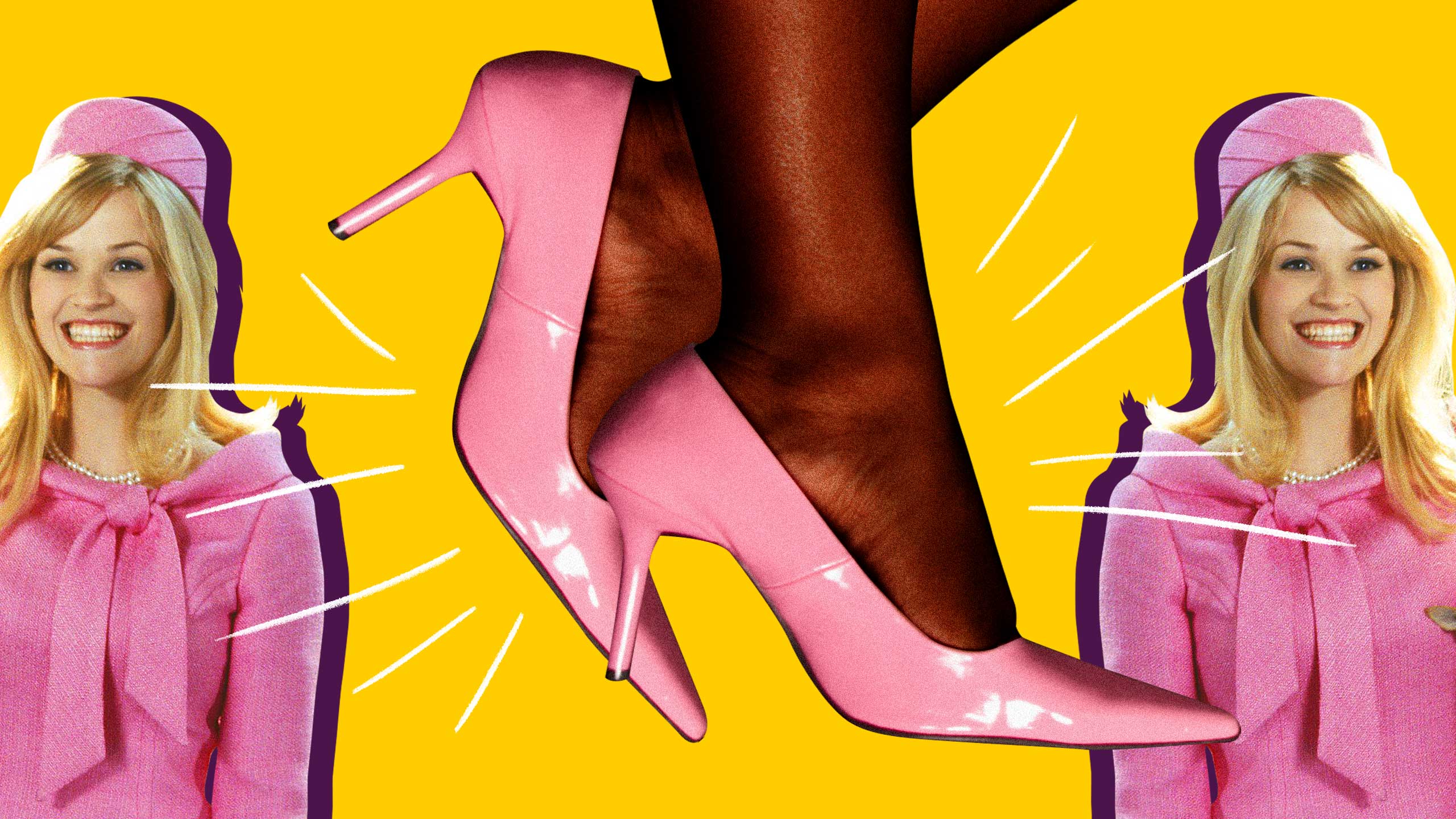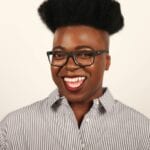Early on in my career as an entertainment journalist, I’d often get asked about my favourite film. Though I initially thought it was a perceptive way to get to know the new reporter on the Los Angeles Times’ movies desk, I quickly realized that was not the intention. In actuality, everyone wanted to know if I was worth my salt, and my answer would be a telltale sign.
It always felt like I was supposed to wax poetic about the canon Hollywood has come to cherish, like I was supposed to choose from a finite list of films universally regarded as the best of the industry. But those films—The Manchurian Candidate, 12 Angry Men, Casablanca, The Godfather, Citizen Kane—never did it for me, a Black child in the South clamouring for possibilities beyond my current circumstances. I grew up on Tyler Perry plays and Disney Channel Original Movies, so my favourite films were absolutely not going to be chock-full of white men.
“I grew up on Tyler Perry plays and Disney Channel Original Movies, so my favourite films were absolutely not going to be chock-full of white men.”
“B.A.P.S.,” I’d say with my whole chest, referencing Robert Townsend’s iconic ’90s comedy starring a pre-Monster’s Ball Halle Berry and the amazing, late Natalie Desselle-Reid. When my answer received a confused face—which was often—I’d add Dreamgirls, The Great Debaters, Sister Act and Sister Act 2: Back in the Habit to the list. If I really wanted to fuck the question-asker up, I’d open my box of alabaster: The Blues Brothers and Blues Brothers 2000; Miss Congeniality and Miss Congeniality 2: Armed and Fabulous; and Legally Blonde and Legally Blonde 2: Red, White & Blonde. She loves a well-executed sequel, y’all!
One day, while rationalizing to someone my love of these films, and in particular Legally Blonde (this process was so commonplace for me I had a script of sorts), I was reminded of the film’s protagonist Elle Woods and her struggle to be taken seriously by the less fabulous, more basic folks around her. And like that meme where Spider-Man is pointing at a version of himself, I was yet again confronted with the film’s excellence as a living, breathing manifestation of it. Legally Blonde made me a bad bitch.
The 2001 film, starring Reese Witherspoon as Elle Woods, follows Woods’ journey from presumed dumb sorority girl to Harvard-educated lawyer. At the start of the film, Elle is a graduating fashion merchandising major and president of the Delta Nu sorority. Her boyfriend, Warner Huntington III, who she’s convinced is about to propose to her, wants to be a United States senator before he turns 30. But in order to do so, he says, he needs a “Jackie,” not a “Marilyn,” on his arm. Chaffed by the idea that she can’t be serious and therefore isn’t worthy of his hand in marriage, Elle applies and is accepted to Harvard Law School, the same school the now ex-boyfriend is slated to attend in the fall. She thinks she’s going to win him back, but life has other plans for this Bel-Air-born, pink-outfitted fish out of water.
I was 10 years old when Legally Blonde came out. I’m fairly sure I did not see it, or its 2003 sequel, in a movie theatre, instead likely stumbling upon them while watching cable television. But I do remember an early viewing of the original. By this time, perhaps five years after its initial release, I was feverishly considering what I wanted to study in college. Hungering for legit possibility models in media, especially those who reflected the essence of the non-binary bad bitch that was brewing in my spirit, I took what I consumed perhaps too seriously. And though my media consumption up to that point featured people and characters with various jobs, very few of them seemed right for me.
Then Elle tipped into the courtroom in one of the film’s penultimate scenes. Having almost quit the night before because she was sexually harassed by the lead attorney (her boss), their client replaces the lead attorney with Elle, a first-year law student. Never mind the absurdity of the plot, I was mesmerized by Elle’s outfit: a deep pink, above-the-knee frock with matching heels and bag. After rejecting her signature colour for more somber and respectable (yet still fashionable!) duds earlier in the film, she reemerges as her most authentic self, bringing all of its fabulousness into a room in which she was once told it could never exist. To see her sorority girl knowledge of perm maintenance used as a way to vindicate her client, proving that one’s looks and interests didn’t automatically correlate to their intellect and that one’s beauty and passion for fashion didn’t have to suffer for a job, was deeply affirming.
In celebration of the film’s 20th anniversary, there have been a number of articles detailing its importance to countless people. Jezebel’s Shannon Melero writes, “Legally Blonde is a perfect example of what can be achieved when feminist messaging doesn’t take itself too seriously.” The New York Times’ Ilana Kaplan says, “[Elle] remains an emblem for challenging stereotypes and embracing female empowerment in the face of misogyny.” But it’s the reflection of Xtra contributor Andi Schwartz that resonates with me most: “Legally Blonde zoomed in on the brilliance of femininity, assuring a generation of femmes that it isn’t something they need to suppress.”
“As early as four, I exhibited queer and gender-nonconfirming behaviour that was not only unaccepted but punished.”
As a young Black child assigned male at birth, there were set expectations for how I was supposed to show up and move through the world. As early as four, I exhibited queer and gender-nonconfirming behaviour that was not only unaccepted but punished. By the time I discovered Legally Blonde, I had perfected a convincing-enough semblance of cisheteronormativity, knowing full well the fabulosity I was holding in. Those around me saw glimpses of it: a dark violet, three-piece suit with matching periwinkle and amethyst alligator dress shoes for Easter here, a brown-marbled, plush, oversize faux-fur bomber jacket there. But there was no way, I thought at the time, that I could fully unfold into my brilliance and live the type of successful life I envisioned for myself; I wanted to be taken seriously, regardless of my career goals and the fact that everything I’d been taught told me that my flair for difference would be a hurdle.
My family always thought I’d be a lawyer. My penchant for arguing, they said, belonged in a courtroom. But I initially rejected being an attorney because it seemed too stodgy and restrictive. Elle Woods single-handedly changed my perception. And I know that sounds absurd, especially considering the brand of white femininity Elle embodies forecasted no room for my budding Black, queer non-binary self and the fact that it’s a work of fiction. (And we can talk later about white women serving as stand-ins for all those historically excluded and “othered” without the triumphs they experience on screen manifesting IRL for those they’re supposed to represent.) But Witherspoon’s character was so impactful it made me want to be a fiercely fab lawyer, too. It made me feel like it was, contrary to everything I’d been told, actually possible.
I was dead set on being a lawyer through my junior year of college. It was then that I took a national government class (or international relations—trauma makes the memory fuzzy!) that was required for pre-law distinction. That class rocked my world and altered my career path of choice. When it came time to switch my major, I remember thinking about Elle Woods. I even bought Legally Blonde (and its sequel starring the then-amazing and now-iconic Regina King) on DVD in the hopes it would help me recommit to law school, to no avail. I realized then that my connection to Elle Woods was about more than being a fabulous lawyer.
What she gave me—in an odd, white-saviour-but-not kind of way—is permission to bring my full self into every space I enter, permission to be confident in what I uniquely bring to the table and secure in the hard work I do. She remains a portal through which I continually access an imagination and reality previously outside my knowledge and reach; in harnessing that imagination, my femme-ness thrives.
“What she gave me—in an odd, white-saviour-but-not kind of way—is permission to bring my full self into every space I enter.”
Everytime I leave the house, and especially if I’m giving high femme, I walk as if I’m Elle entering that courtroom and completely shitting on the old white man I’ve replaced. Granted, my walk also has a skosh of Gabrielle Union’s Conny Spaulding from Two Can Play That Game and a whole lot of Miss J. Alexander, runway diva extraordinaire of America’s Next Top Model fame. But Elle Woods is one of the earliest characters I saw that let me know those of us often counted out can win, too.
In the years since I first discovered Legally Blonde, a lot has changed for me. Perhaps the greatest shift has been in how much of a bad bitch I know I am. Yes, it’s the walk, but it’s also the talk. And the results! So the next time somebody needs justification for the greatness that is Legally Blonde, just point them in my direction.
Because the proof is in this pudding.


 Why you can trust Xtra
Why you can trust Xtra


